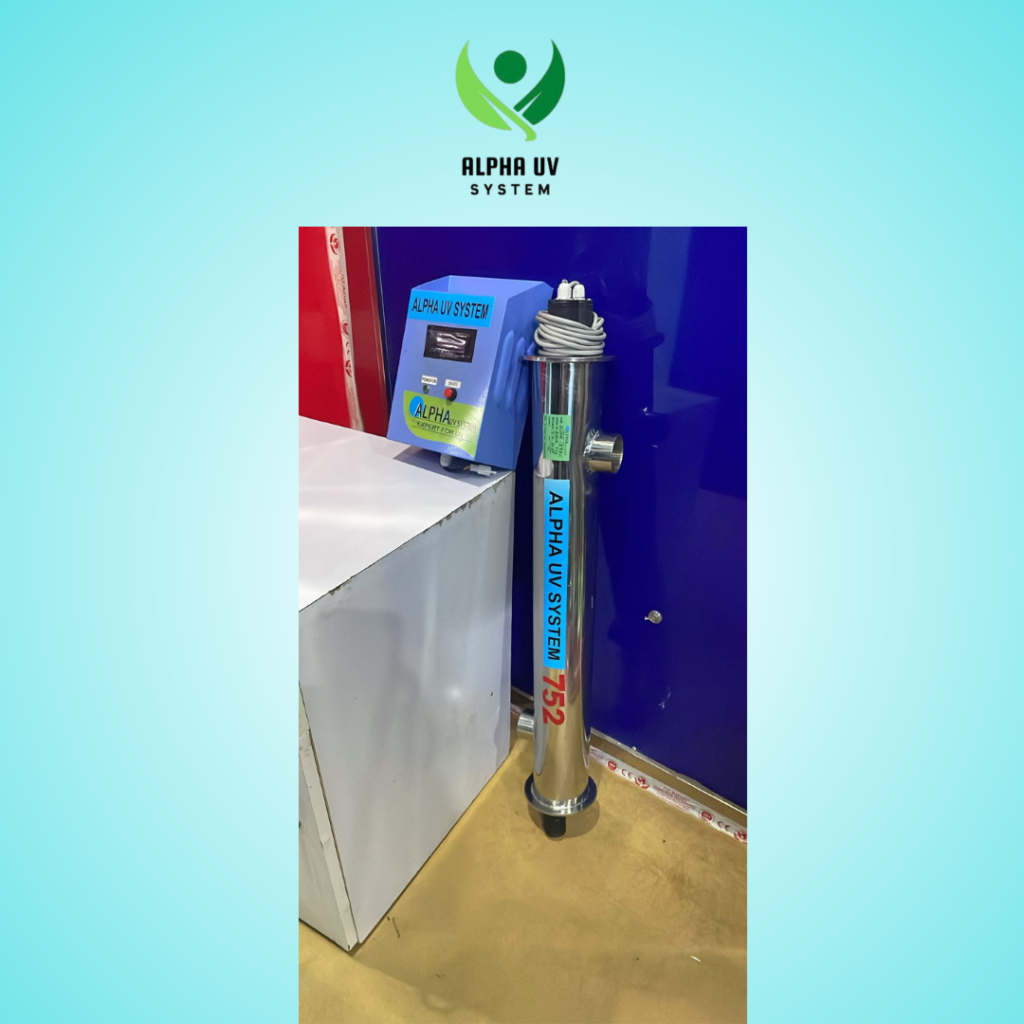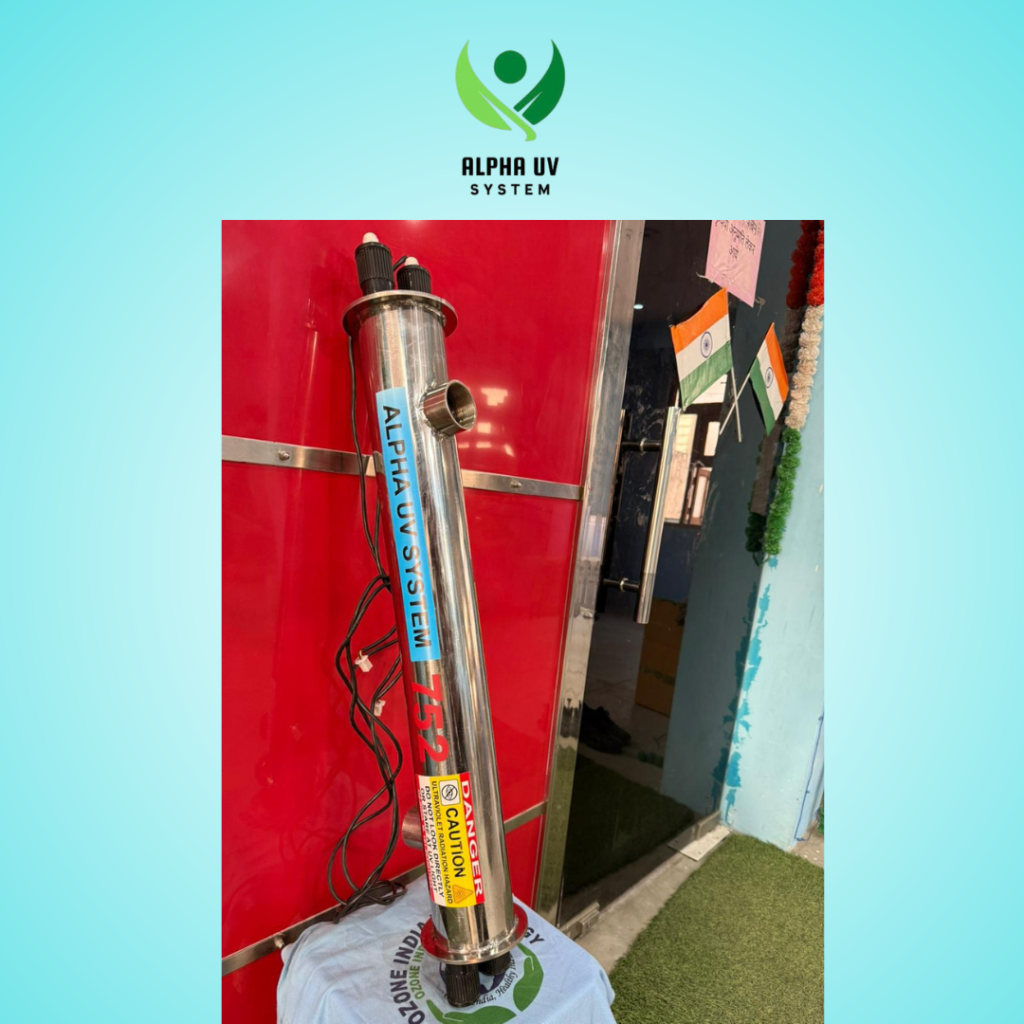Introduction (Commercial UV Water Treatment System)
Water plays an essential role in the daily operations of nearly every commercial and industrial facility. Whether it’s a food and beverage plant, a pharmaceutical lab, or a manufacturing unit, the need for clean, safe, and reliable water is universal. With rising concerns around water contamination, public health risks, and strict industry regulations, businesses are turning to more advanced solutions to maintain water quality. A Commercial UV Water Treatment System offers an efficient, chemical-free method for achieving consistent water disinfection. By using ultraviolet light to eliminate harmful microorganisms, a Commercial UV Water Treatment System ensures your business complies with safety standards while protecting both equipment and end-users from waterborne threats.
The adoption of a Commercial UV Water Treatment System is not just a response to regulatory pressure—it’s a proactive investment in long-term water safety and operational efficiency. At its core, a Commercial UV Water Treatment System uses UV-C light, a specific wavelength proven to inactivate bacteria, viruses, and protozoa by disrupting their DNA. As water flows through the system, pathogens are rendered harmless within seconds. Unlike chemical disinfection methods, a Commercial UV Water Treatment System does not leave behind any residual taste, odor, or by-products. This makes it a highly attractive solution for industries where water purity is critical. With minimal maintenance, fast processing times, and compatibility with existing water treatment infrastructure, a Commercial UV Water Treatment System is a smart, scalable option for businesses of all sizes.
Implementing a commercial UV water treatment system is more than just a technical upgrade—it’s a forward-thinking investment in operational safety, compliance, and environmental responsibility. Unlike chemical treatments, UV disinfection doesn’t produce any harmful by-products or chemical waste. This makes it an ideal solution for companies looking to reduce chemical use, meet stringent water quality regulations, and enhance their sustainability efforts. Whether you’re aiming to protect your customers, your products, or your brand reputation, UV water treatment offers a reliable, low-maintenance, and future-proof way to ensure high water quality standards across your operations.
What Are Commercial UV Water Treatment Systems?
Commercial UV water treatment systems employ ultraviolet light to disinfect water by deactivating harmful microorganisms such as bacteria, viruses, and protozoa without the use of chemicals. This method is highly effective and environmentally friendly, making it increasingly popular for various commercial applications.
How Commercial UV Water Treatment Works
Understanding the science behind UV water treatment helps you appreciate its reliability and effectiveness in disinfection. Here’s a detailed breakdown of how this innovative process works:
1. UV-C Light Emission
- At the heart of a UV water treatment system is the UV lamp, which emits UV-C light, typically at a wavelength of 254 nanometers. UV-C is a shortwave ultraviolet light that has proven germicidal properties, capable of disrupting the DNA and RNA of microorganisms. These lamps are enclosed in quartz sleeves to protect them from direct water exposure while maintaining maximum light transmission.
2. The Disinfection Process
- As water flows through the UV reaction chamber, it is exposed to UV-C light. The UV light penetrates the cell walls of microorganisms like bacteria, viruses, and protozoa (e.g., Giardia, Cryptosporidium). UV energy causes irreversible damage to the microorganisms’ genetic material, specifically their DNA and RNA. This prevents replication, effectively neutralizing the pathogens and stopping them from causing infections. The process takes just seconds, making UV treatment one of the fastest water disinfection methods available.
3. Chemical-Free and Residue-Free Treatment
- Unlike traditional disinfection methods such as chlorination or ozonation, UV treatment does not add any chemicals to the water. It’s an eco-friendly solution, safe for both human consumption and environmental discharge.
- This ensures:
- No chemical residue
- No change in taste, color, or odor
- No formation of harmful byproducts, such as trihalomethanes (THMs) or chloramines
4. Continuous and Reliable Operation
- UV systems operate continuously, requiring no chemical handling or dosing systems. These features help maintain consistent performance and alert users in case of system underperformance or lamp failure.
- They are typically automated, equipped with:
- UV intensity sensors
- Flow meters
- Alarm systems
5. Supplementary Role in Multi-Barrier Systems
- UV water treatment can be used as a standalone disinfection method or as part of a multi-barrier treatment system. This integration enhances overall water quality and system efficiency

Benefits of Commercial UV Water Treatment
- Effective Disinfection: Capable of eliminating up to 99.99% of harmful microorganisms, ensuring high water quality.
- Chemical-Free Process: Avoids the use of potentially hazardous chemicals, reducing health and safety risks.
- Environmentally Friendly: Produces no disinfection by-products, minimizing environmental impact.
- Cost-Effective: Low operational costs due to minimal maintenance requirements and no need for chemical purchases.
- Energy Efficient: Modern UV systems are designed to consume minimal energy while providing effective treatment.
- Maintains Water Quality: Preserves the natural taste, odor, and pH of water, making it suitable for various applications.
Application of UV Water Treatment
1. Food and Beverage Industry
In this sector, maintaining stringent hygiene standards is crucial. UV treatment serves as an effective alternative to traditional methods like carbon filtration and heat pasteurization. It disinfects process water and water used as an ingredient, effectively inactivating microorganisms without altering the water’s taste or introducing chemicals. This approach is particularly beneficial for treating incoming water, syrups, clean-in-place water, and wastewater.
2. Pharmaceuticals
The pharmaceutical industry demands ultrapure water for drug formulation and manufacturing. UV disinfection is pivotal in purified water systems, ensuring microbiological purity throughout the production process. By integrating UV systems post-carbon filtration and pre-reverse osmosis, microbial counts are significantly reduced, safeguarding against contamination.
3. Industrial Manufacturing
High-quality water is essential for various industrial processes, including cooling, cleaning, and product formulation. UV disinfection offers a chemical-free method to neutralize a broad spectrum of pathogens and pollutants in wastewater. This not only ensures compliance with environmental regulations but also enhances the efficiency and safety of manufacturing operations.
4. Healthcare Facilities
Hospitals and medical centers require pathogen-free water to prevent healthcare-associated infections. UV disinfection serves as an effective barrier against opportunistic pathogens commonly found in hospital water systems, such as Legionella and Pseudomonas. Implementing UV systems in water management programs enhances patient safety and supports overall infection control strategies.
5. Aquaculture
Maintaining disease-free water is vital for the health and growth of aquatic life in hatcheries and fish farms. UV systems effectively neutralize harmful pathogens and parasites, reducing the risk of disease outbreaks. This chemical-free approach ensures a safe environment for aquatic organisms and supports sustainable aquaculture practices.
6. Municipal Water Treatment
Municipalities utilize UV treatment to enhance the safety of public water supplies. UV light provides an additional disinfection barrier, effectively inactivating chlorine-resistant pathogens like Cryptosporidium and Giardia. Often used in conjunction with chlorine, UV treatment offers robust, multi-barrier protection for drinking water, ensuring compliance with public health standards.

Key Considerations When Choosing a Commercial UV Water Treatment System
1. Water Flow Rate
- The system’s flow rate capacity must match your facility’s daily or peak water demand. An undersized system can lead to ineffective disinfection, while an oversized system may result in unnecessary energy consumption. Look for systems designed to handle commercial-scale water usage, typically measured in gallons per minute (GPM) or liters per second (L/s).
2. UV Dose Requirements
- UV dose, measured in millijoules per square centimeter (mJ/cm²), determines how effectively the system neutralizes microorganisms. Ensure the system delivers a minimum dose of 30–40 mJ/cm² for standard disinfection or higher (e.g., 60 mJ/cm²) for more resistant pathogens. Opt for units with validated performance data or third-party testing results.
3. Water Quality Parameters
- Turbidity, suspended solids, and hardness can block or scatter UV light, reducing its effectiveness. Use UV transmittance (UVT) values to assess the clarity of your water—ideally, UVT should be >85% for optimal performance.
- Pre-treatment systems like filtration or softening may be needed if water contains:
- High turbidity
- Iron or manganese
- Organic matter or scale-forming minerals
4. System Footprint and Installation Space
- Consider the physical dimensions of the UV chamber, control panel, and any ancillary equipment. Ensure the system can be installed conveniently in your facility without disrupting existing infrastructure. Some advanced models come with modular designs or compact footprints for space-saving installation.
5. Integration with Existing Systems
- The UV unit should seamlessly integrate with your current water treatment setup (filtration, RO, etc.). Integration minimizes manual oversight and improves operational efficiency
- Look for features like:
- Automatic shut-off valves
- SCADA or PLC compatibility
- Flow sensors and UV intensity monitors
6. Energy Efficiency
- Select a system designed with low power consumption without compromising performance. Look for energy-saving modes or variable-output ballasts that adjust lamp intensity based on flow rate or UVT. Long-term cost savings can be significant with the right design.

Conclusion
Choosing the right water disinfection method is critical for the health of your operations, your products, and your people. A Commercial UV Water Treatment System offers a powerful combination of safety, efficiency, and sustainability—eliminating harmful microorganisms without the use of chemicals or producing hazardous by-products. Whether you’re running a food production unit, pharmaceutical facility, or an industrial plant, integrating a Commercial UV Water Treatment System can significantly improve your water quality and compliance with regulatory standards.
With benefits like low maintenance, cost-effectiveness, instant disinfection, and eco-friendliness, UV technology is no longer just an option—it’s a necessity for future-focused businesses. Don’t wait for contamination or compliance issues to take action.

